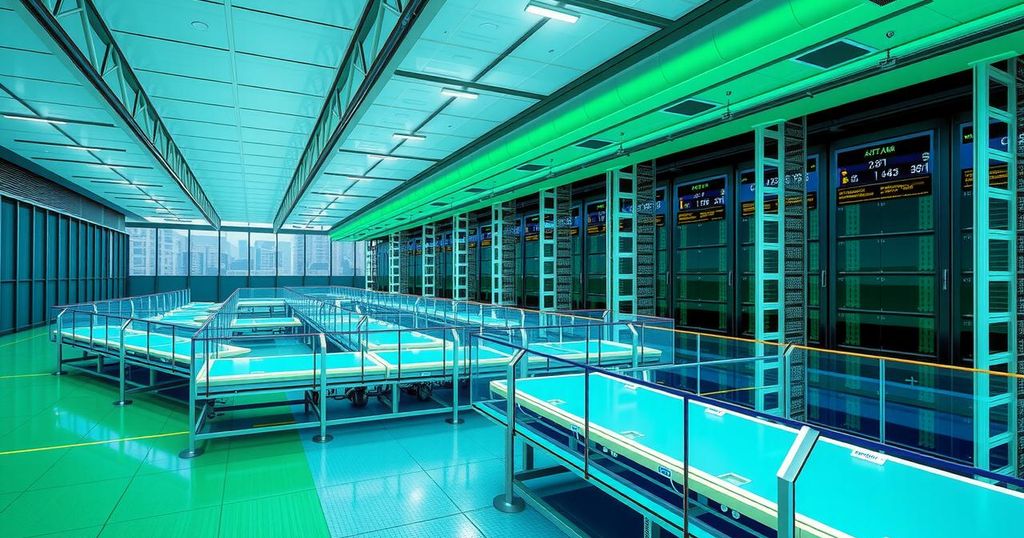Big Tech Races to Build AI Data Centers Amid Rising Carbon Emissions
- AI data center carbon emissions may surge 11-fold by 2030.
- Projected electricity consumption of AI data centers could hit 612 terawatt-hours annually.
- AI data centers may consume over 3 billion cubic meters of water each year.
- Accenture warns about the environmental impacts amidst AI expansion.
- OpenAI’s initiative to build infrastructure is set at $500 billion.
- Meta is raising $29 billion for its AI data center projects.
AI Data Centers Face Environmental Challenges
Big Tech companies are racing against the clock to construct AI data centers, spurred by the latest report from Accenture, which warns that carbon emissions from these facilities could skyrocket by 11 times by 2030. As I soaked in the early summer heat in my home state of New Jersey, I couldn’t shake the discomforting reality behind the staggering statistics presented. Over the next five years, AI data centers are projected to guzzle up 612 terawatt-hours of electricity, a figure that mirrors Canada’s annual power consumption, which could nudge global carbon emissions up by 3.4%. It’s a grim revelation, hinting that while we pursue technological advancement, the cost in terms of our environment might be staggering.
Urgent Calls for Sustainable Practices
Moreover, the impact isn’t solely on carbon emissions. Water resources are also under threat. Accenture estimates that AI data centers may consume over 3 billion cubic meters of water every year. This amount eclipses the yearly freshwater withdrawals of entire nations. The report, titled Powering Sustainable AI, offers some recommendations to mitigate this troubling trajectory. It suggests improving energy efficiency in AI workloads and data centers. However, with the apparent urgency of dominating the AI landscape against rivals like China, I can’t help but feel we’re speeding toward a deadline—one that could be detrimental to our environment.
Balancing AI Growth and Environmental Responsibility
OpenAI just signed a deal to utilize significant computing power from Oracle data centers, part of a monumental $500 billion initiative to build new AI infrastructure domestically. This commitment to expand is mirrored by Meta, who’s seeking to pull in $29 billion from private investors while already investing heavily in a massive AI data center in Northeast Louisiana. CEO Mark Zuckerberg has been vocal about the competition, emphasizing America’s need to ramp up AI data center construction or risk being outpaced by competitors like China. David Sacks, the White House’s AI and Crypto Czar, shares this sentiment, advocating for faster infrastructure buildouts; calling the current pace a potential setback for U.S. innovation and competition. Accenture’s Matthew Robinson echoes the need for accountability in growth, urging the tech giants to prioritize sustainability alongside their developments. “We need to open a conversation on actions to prevent this from becoming our reality—enhancing efficiency should come hand in hand with expansion,” he advised. It appears that, despite the flashy headlines and ambitious projections, real solutions for a sustainable future remain on the drawing board.
In conclusion, the rapid expansion of AI data centers comes with pressing concerns regarding carbon emissions and resource consumption. While companies like OpenAI and Meta are making giant leaps in building AI infrastructure, reports from Accenture highlight the environmental costs tied to this growth. As tech giants race toward AI dominance, the urgency of addressing sustainability might just be the balancing act needed to ensure a healthier planet for future advancements.




Post Comment